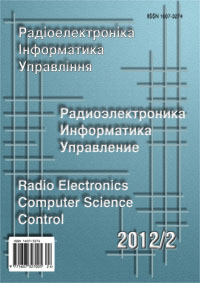GENERATION OF THE TRANSITION OPERATOR FOR PARALLEL STEP CONTROL AT MODELING LINEAR DYNAMIC SYSTEMS
DOI:
https://doi.org/10.15588/1607-3274-2012-2-16Keywords:
parallel simulation, stepwise method, transition operator, step adaptation, the cluster.Abstract
Parallel algorithms of modeling of the linear dynamic objects based on the construction of transition operators are offered. The developed algorithms are based on the nested stages schemes and allow one to fulfill an automatic selection of the optimum step size at each grid point. Parallel realization is focused on the cluster computing systems of type MIMD. The basic idea, which is based on the construction of the transition operators for solving linear systems of ordinary differential equations on parallel computers, is the simultaneous receipt of two approximations of different orders. Step control algorithms proposed in the article are based on the use of nested stages methods. Parallel processing is carried out within each step with the number of stages s and s+1. Two strands of calculations are independent and need to exchange occurs only after the final results for the calculation points. Transition operators for each s-stage method are built once, before the calculations and allow reducing the number of matrix operations performed at each step by s times due to parallel implementation.Downloads
Published
How to Cite
Issue
Section
License
Copyright (c) 2014 O.A. Dmitrieva

This work is licensed under a Creative Commons Attribution-ShareAlike 4.0 International License.
Creative Commons Licensing Notifications in the Copyright Notices
The journal allows the authors to hold the copyright without restrictions and to retain publishing rights without restrictions.
The journal allows readers to read, download, copy, distribute, print, search, or link to the full texts of its articles.
The journal allows to reuse and remixing of its content, in accordance with a Creative Commons license СС BY -SA.
Authors who publish with this journal agree to the following terms:
-
Authors retain copyright and grant the journal right of first publication with the work simultaneously licensed under a Creative Commons Attribution License CC BY-SA that allows others to share the work with an acknowledgement of the work's authorship and initial publication in this journal.
-
Authors are able to enter into separate, additional contractual arrangements for the non-exclusive distribution of the journal's published version of the work (e.g., post it to an institutional repository or publish it in a book), with an acknowledgement of its initial publication in this journal.
-
Authors are permitted and encouraged to post their work online (e.g., in institutional repositories or on their website) prior to and during the submission process, as it can lead to productive exchanges, as well as earlier and greater citation of published work.






